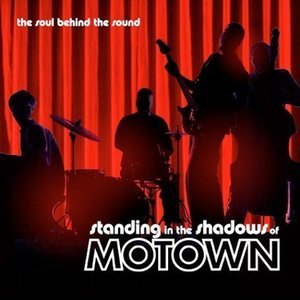Standing in the Shadows of Motown - Film Review

"Standing in the Shadows of Motown" is one of those documentaries that make you appreciate someone you may never even knew existed.
In this case, it's The Funk Brothers, the 14 studio and concert musicians responsible for the "Motown sound" that distinguished that genre of music from all others in the 1960s.
THE MUSIC
Early on in ''Standing in the Shadows of Motown,'' the drummer Steve Jordan makes what seems, on its face, like an outrageous assertion about the music that emerged from the ''Hitsville, U.S.A.'' factory from 1959 to 1971. ''You could have had Deputy Dawg singing on some of this stuff and had a hit,'' he says. ''Because the tracks were just so incredible. They were musical entities unto themselves.''
I question whether "Respect" would have sounded anywhere near as great without Aretha Franklin's attitude. That said, what this film does so cleverly is to open your ears to music in a way that few musical documentaries have attempted., let alone succeeded in doing. More than an overdue celebration of the Funk Brothers, it's a revelatory aural journey that gets you to hear something you've always known without quite realizing it: that the magic of the Motown sound was, quite literally, a sound which the Funk Brothers created.
In one marvellous sequence, a half dozen of these supremely relaxed men, all in their 60s and 70s, sit down to play ''Ain't Too Proud to Beg,'' adding the instruments one by one. Uriel Jones lays down the bursting yet paradoxically delicate drumbeat, and when Bob Babbitt comes in with his walking bass, the song already sounds larger than its parts. Eddie Willis' staccato, off-the-beat guitar strums - pause, plank! pause, plank! - add color in the form of rhythm, and by the time they've been topped by the exultant spangle of Jack Ashford's tambourine, you realize why, in a sense, any singer could have succeeded atop this sublime chassis.
More than just great musicians, the Funk Brothers treated each and every instrument as a voice, blending them to create a unique sense of space - not a wall of sound but a harmonic globe of sound.
INTERVIEWS
Sadly, a few of The Funk Brothers have now passed away including:
- James Jamerson, considered to be a bass player of exceptional originality ("He put music to everything that had life"), went to Los Angeles when the company moved, but couldn't fit into the West Coast jive and started drinking.
- Benny "Papa Zita" Benjamin brought the backbeat to the early Motown hits. He was a drummer from Alabama, who overdosed on drugs.
- Earl Van Dyke played what they called "guerrilla piano" and became a huge influence to the sound on such classics as For Once In My Life and My Guy. In his later years, he taught music in the Detroit state schools.
However, ''Standing in the Shadows of Motown'' offers terrific interviews with the surviving Funk Brothers, who provide a tasty insider history of 4 a.m. recording sessions inside ''the snake pit'' (as the fabled Studio A was known) as well as a chilling description of their final kiss-off from Berry Gordy, the Motown mogul who treated them like indentured servants.
The interviews are woven around a reunion concert given in Detroit in 2000, with assorted contemporary singers filling in for the Motown greats. (The showstopping highlight: Joan Osborne doing ''What Becomes of the Broken Hearted.'')
The most fascinating anecdotes revolve around the man who was, by universal assent, the genius of the group -- the late bassist James Jamerson, who caressed his low notes into an angel's ostinato, so that he seemed to be wandering through, and creating, every dimension of a song. No studio musician ever cast a greater shadow.
THEN AND NOW
The Funk Brothers were underappreciated at the time, and they knew it, but they loved playing together. Now, decades later, they seem to enjoy swapping stories and sharing memories, quietly revelling in the idea that someone is finally giving them their due. It is always inspiring to see hard work rewarded, but especially when the workers haven't sought the spotlight.
The Funk Brothers were reunited for a concert a couple years ago, and footage of it is interspersed with interviews in this unfailingly upbeat documentary.
The film's finale covers the opening of this commemorative concert in Detroit, when The Funk Brothers take their places on stage, carrying life-size photographs of the faces of Jamerson and Benjamin and the others who "are here in spirit.". As they begin to play and Joan Osborne walks out to sing the first number, you know you are in the presence of greatness.
The purpose of the film is to celebrate the music as much as to tell the story behind it, and fans of all types of popular music will find it irreplaceable.



Recommended Comments
There are no comments to display.
Get involved with Soul Source
Add your comments now
Join Soul Source
A free & easy soul music affair!
Join Soul Source now!Log in to Soul Source
Jump right back in!
Log in now!